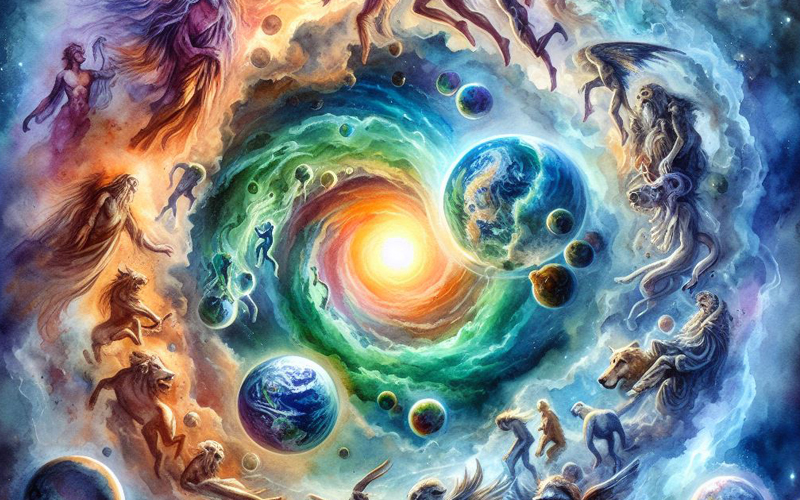Physical Address
Empirical System, 105 First Floor Pitru Krupa, Opp. R.K. Desai College, Koparli Road, Vapi (Gujarat) 396 191
Physical Address
Empirical System, 105 First Floor Pitru Krupa, Opp. R.K. Desai College, Koparli Road, Vapi (Gujarat) 396 191

In the beginning, there was nothing—no earth, no sky, no air, and no heavens. Darkness enveloped everything, an endless, silent void.
“Then there was neither non-existence nor existence:
There was no realm of air, no sky beyond it.”
In this void, the universe lay unmanifest, shrouded in deep mystery. The ancient hymn from the Rigveda, known as the Nasadiya Sukta, speaks of this profound emptiness. It describes a time when there was neither existence nor non-existence. In that great stillness, desire stirred for the first time—an eternal, primal urge to become, to create.
According to the Upanishads, this primal desire arose from Brahman, the ultimate reality. The Chandogya Upanishad says, “In the beginning, there was only the Self, in the shape of a person.” This Self, or Brahman, looked around and saw nothing else. From the depths of its own being, it said, “Let me become many, let me grow forth.” And thus, from the very essence of Brahman, the universe began to unfold.
In the Puranic texts, we encounter more vivid and imaginative narratives. The Vishnu Purana describes the great god Vishnu, resting on the serpent Ananta in the infinite cosmic ocean. From his navel emerged a magnificent lotus flower, and from that lotus, Brahma, the creator god, was born.
“I am Brahma, born from the lotus of Vishnu. I shall create the universe!”
Brahma sat in deep meditation, then began the divine task of creation. Through intense focus, he gave rise to the elements—fire, water, air, earth, and space. He created the heavens and the earth, the gods and the demons, humans, and all living beings. Everything in existence sprang forth from his divine thoughts.
Time, in Hindu cosmology, is not linear but cyclic. The universe undergoes endless cycles of creation, preservation, and destruction. Each cycle, known as a Kalpa, lasts 4.32 billion years—a single day in the life of Brahma. This grand cosmic cycle is further divided into four Yugas: Satya Yuga, Treta Yuga, Dvapara Yuga, and Kali Yuga. In each Yuga, the balance of dharma—cosmic order—shifts, evolving through time.
Another beautiful and symbolic story is that of the cosmic egg, or Brahmanda. In the beginning, this golden egg floated in the cosmic waters. When it split, it formed the heavens above and the earth below, bringing forth the entire cosmos.
These stories, rich in symbolism and spiritual insight, remind us of the eternal, ever-renewing nature of the universe. From the mysterious void to the cosmic ocean, from Brahman’s desire to Brahma’s creation, Hindu scriptures offer a timeless vision of the cosmos—an endless cycle of birth, existence, and renewal.